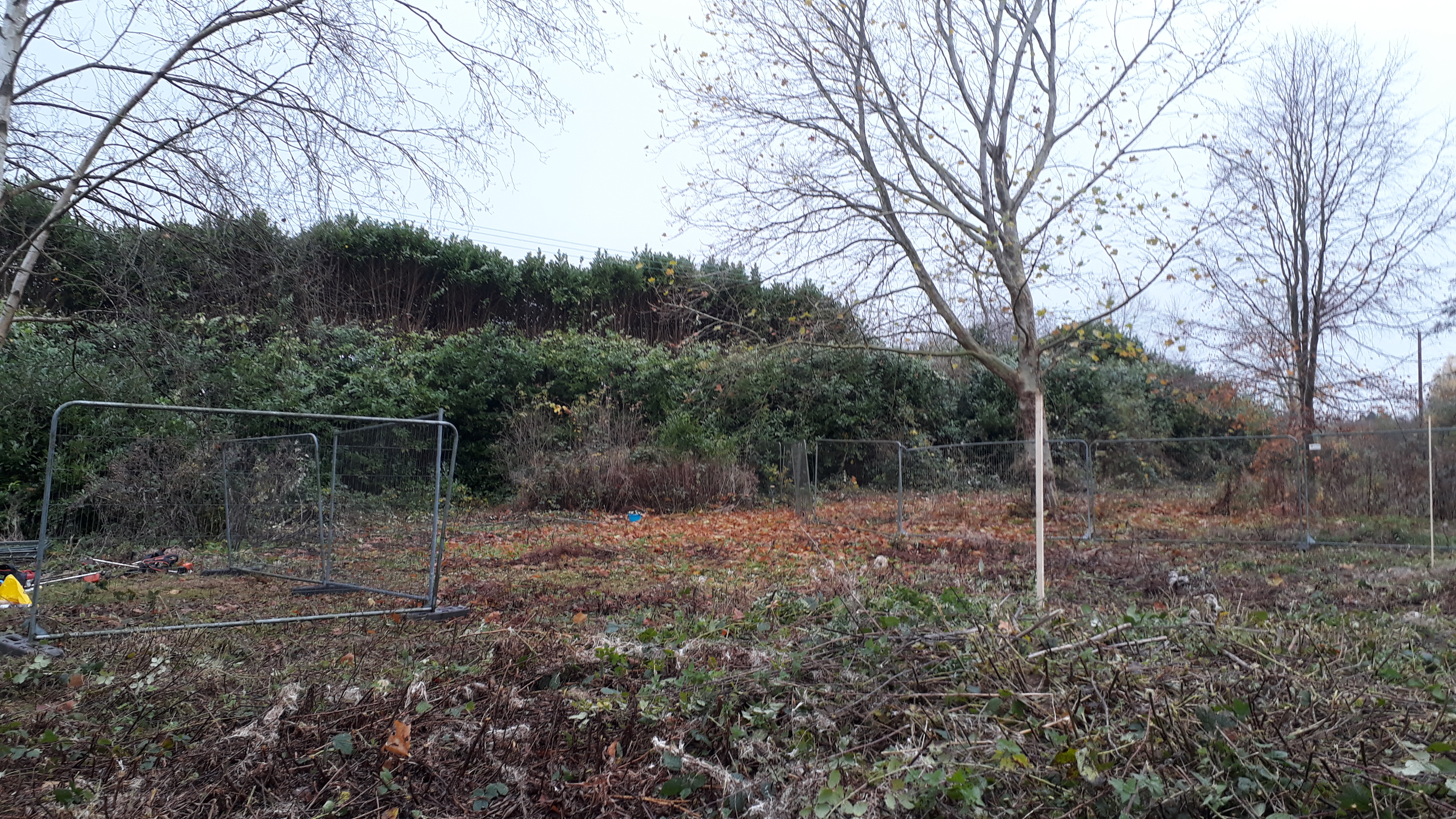The world of planning is often bizarre. That’s the case with Linney House where a series of applications for houses in the grounds have met objections from residents and planners. But the developer, Linney House Developments, did gain planning permission in 2014 and 2017. Planning law says that developers must start work within three years on planning permission being granted. The current planning application for eight homes on the site has run into trouble with strong objections from Shropshire Council’s planning team.
Yesterday, contractors moved onto the site to begin work. Alerted by concerned residents, I went to the site to check up on what was happening. Heras fencing is being erected, undergrowth cleared and foundations dug for a garage. That’s enough to stop the 2017 permission for three large houses expiring. Although work has started, there is no current intention of building this scheme. As I said, the world of planning is often bizarre.
I asked if the site could be sold and turned into a nature reserve. Answer, no.
I was waiting to book a flu jab in Boots when I spotted an urgent email from a Linney resident. Although dressed for office meetings, not a muddy construction site I headed off to Linney House.
There I met James Hepworth of Linney House Developments and Colin Richards his adviser. James was very clear about what he was trying to achieve although it would be fair to say that we did not have a meeting of minds. James is concerned that the 2017 planning permission will expire on 17 May 2020.
Section 56(4) of the Town and Country Planning Act 1990 says that “development is taken to be begun on the earliest date on which a material operation is carried out”. A material operation can include any works of construction, demolition, digging foundations, laying out or constructing a road and a material change in the use of the land. In practice, very minor works are enough to commence a planning permission. Once commenced, the planning permission cannot expire even if no more work takes place.
That’s why work on the site commenced yesterday. James Hepworth was very clear that he had no intention of building the three houses permitted in 2017. He was keeping the planning permission alive. The 2017 application was only submitted to keep the 2014 permission alive. So, this is the second attempt to ensure that this site is developed against the odds.
As a rule of thumb, once planning permission has been given to develop a site, that sets a precedent for approving future applications even when planning permission has expired. But planning rules change and they way they are interpreted changes. The 2014 application was approved at a time when Shropshire Council was under huge pressure to approve housing because it was in breach of government rules that require it to identify enough land to build houses for five years. The then councillor for Ludlow North did not call the scheme into the planning committee so it was approved by officers. The 2017 application, was simply an attempt to keep the 2014 application alive and Shropshire Council approved it, rejecting calls for the scheme to be decided by the South Planning Committee.
Interpretation of planning rules also changes. A key decision for Ludlow was the Barnwell Manor judgement in the high court, along with a decision in Kent. The judges in these cases ruled that the law said “considerable importance and weight” must be given to preserving the setting of historic buildings and conservation areas. Heritage impact, along with ecological impact, are the two primary reasons why Shropshire Council’s planning officers want to reject the current scheme for eight homes in the grounds of Linney House.
This is the background to contractors moving onto site yesterday. Uncertain of gaining planning permission for the latest scheme and with the 2017 due to expire early next year, Linney House Developments have decided to commence the 2017 permission.
This is a mess. A developer is commencing a planning permission for a housing scheme he doesn’t want to build. He refuses to consider offers for the site to create a nature reserve. Now he has commenced, he is content to wait. That means that this former quarry site is likely to remain disused for a long while to come.
The next step is that Shropshire Council must decide on the 2019 planning application. It is minded to refuse. However, Linney House Developments is within its rights to ask the planning inspectorate to decide the application because the council has failed to determine it within the statutory time limit of 3 months.
We are not at the end of the saga of Linney House.





